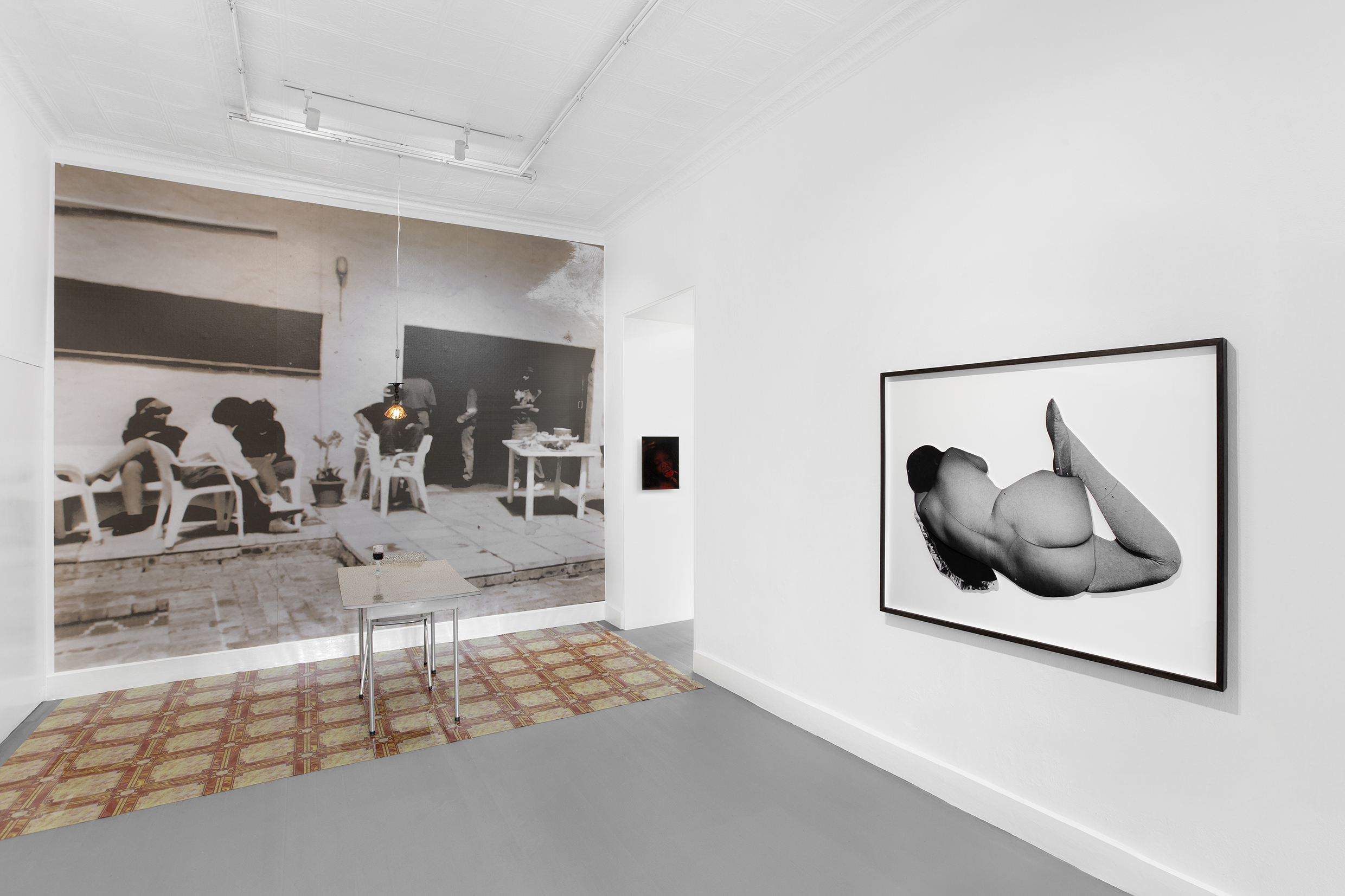Johannesburg
2 December 2023 - 2 February 2024I miss myself the most

STEVENSON is pleased to present I miss myself the most, a group exhibition curated by Aza Mbovane and Mosa Molapo.
I miss myself the most engages with memory-making, addressing memory’s opacity and the role played by imagination and fantasy in the practice of remembrance. The title of the exhibition is drawn from Mahube Diseko’s soft sculpture of the same name. Here, the phrase is threaded onto a pair of underwear, presenting an intimate confession on a private canvas to lucidly express the longing and searching associated with memory. The participating artists engage with the weight and insistence of imagination in individual and collective memories. Imagination becomes a focal point; an entryway to longing, solace or reflection; or even a malleable tool that makes us (mis)remember moments.
Installations by Natalie Paneng and Allyssa Herman showcase the intimacy of memory as it evolves, and also as it stays frozen in time. Paneng, a ‘world and multiverse builder’, stages an installation around an anthropomorphised room-divider titled Ke Thlogo (‘It’s a head’ in Setswana) , with feet, nose and mouth modelled after the artist. Each shelf exhibits Paneng in different forms, creating an elaborate, changing shrine for her curated avatars. For Paneng, the room divider is complicit in ‘holding spaces’ and references the sentimentality of a bygone era – one in which delicate glass objects, shiny porcelain objects and untouched crockery were proudly displayed. Paneng’s installation extends to the creation of an enclosed garden where she continues to test the boundaries of interior and exterior spaces, asking that we bear witness to her making of a world, where she grows and memorialises herself.
In Herman’s installation, Solitude, the artist makes reference to her grandmother’s kitchen with vinyl flooring, kitchen furnishings and wallpaper. She extends an invitation to the nostalgia of her upbringing, using this setting to explore feelings of isolation, articulated through a single chair at the table and a directed spotlight above the scene. In conversation with Herman’s introspection, Aneesah Girie sets hijabs hardened with resin over molds of cutlery and plates. Fascinated by the concept and boundaries of a spillage, Girie makes linkages between the kitchen and the hijab as spaces and objects which are able to hold memories of the women around her.
In a kiss, and through performance, Motlhoki Nono and Steven Cohen place physical sensations at the centre of individual recollection. Nono imagines a kiss from an unseen angle, capturing this intimate encounter from a slightly distorted and grotesque lens. On the occasion of one of Cohen’s final performances of Put your heart under your feet… and walk, a ceremony dedicated to the memory of his late partner, the artist for the first time invites the audience to witness his assemblage of a ‘tape portrait’ to commemorate the event, painstakingly removing layers of make-up to render the moving memory still. Frida Orupabo uses found archival material to collage a nude figure turned inwards and away from prying eyes, emphasising the tension between private meditation and public perception.
Lebohang Kganye and Sosa Joseph contend with alternative memory-making by working within the intersection of national histories and individual moments, and the process of re-inscribing and re-imagining figures who have been omitted from those archives. Kganye takes inspiration from Muthi Nhlema’s novella Ta O’reva, which presents an alternative South African history. In this version, someone else assumes the role Nelson Mandela played in the struggle against apartheid, causing ripple effects. The works presented by Kganye form part of her series In Search for Memory, whereby she stages and photographs interpreted scenes using cardboard cut-outs, furniture from her grandmother’s house, and silhouettes from family albums to present a personalised connection to this fictional history, playing with myth and truth.
In Sosa Joseph’s Madathi’s last time under the yoke, Kerala, faceless figures haunt the painted scene. Some gather in the background whilst others look onto the central figure, Madathi, who has been yoked together with a bull. Joseph’s practice depicts the forgotten experiences of people enslaved over centuries in her part of the world, breathing life into fleeting scenes that are lost in between national archival projects – an act of retrospective memory making.
Mame-Diarra Niang offers an abstracted ‘non-portrait’ alongside Lunga Ntila’s collage portrait which explore the layers of the self that cannot be easily captured or placed. Niang uses illusory portraits to refuse the weight of representing and performing blackness; instead, she reflects on the connections made between dreams and the subconscious within selfhood. Ntila similarly straddles the lines of legibility and contemplation by collaging parts of her body and face into a portrait, with new configurations. She chooses the mirror as a canvas, implicating a mundane object that promises to reflect what is ‘true’. Created in a meditative state, Mankebe Seakgoe’s I had a dream…and then there was fire includes a loose calligraphic non-language of the artist’s own making. Reflecting on self and image, Seakgoe says, ‘In a way these feel like portraits. They are parts of me that feel the closest to me, the parts of me that I can see.’
The sounds of Simnikiwe Buhlungu’s 2022 film The Khuaya, which ring through the space, are a combination of singing and excerpts of a conversation amongst friends. The audience becomes witness, adjudicator and co-conspirator while they discuss a neighbourhood event, trying to piece together a single story from multiple perspectives.
I miss myself the most moves across the dialectical relationships that memory occupies in spaces, bodies and abstraction, using imagination as a guide to grapple with the inconsistencies of recollection, and the longing to reconnect with time, feelings and moments passed.
The Joburg gallery closes for a break from 15 December and reopens 8 January.


